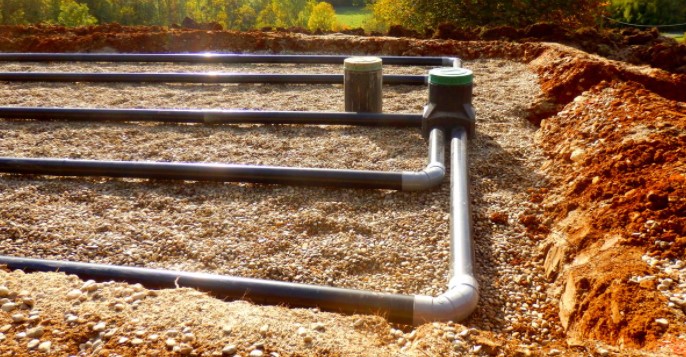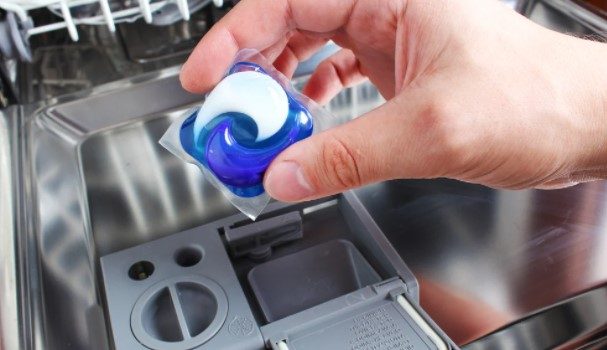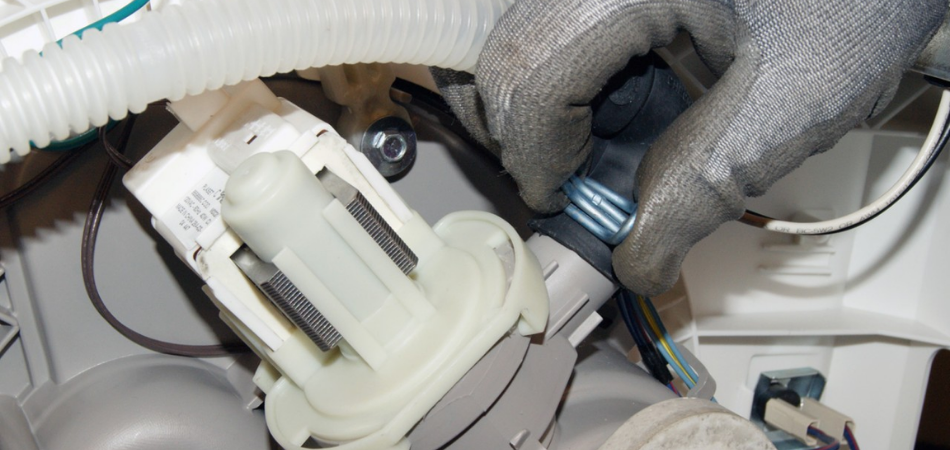A Septic tank is a container or chamber as part of your house’s plumbing system that helps to hold the wastage of your house. This means all the wastewater, including the dishwasher wastewater and toile sludges, go from your home’s drainage pipe to the septic tank.
If we talk about modern dishwashers, they use a lot less water and run more efficiently, which is particularly great for a septic tank. However, if you’re a new dishwasher user, then it’s common to get confused about how to connect a dishwasher to a septic system.
In that case, if you’ve ended up with the same confusion, nothing to worry about. Throughout this guide, we’re going to show you the installation process of a dishwasher on a septic system.
Contents
What Is a Septic System?
A Septic tank or system is a part of a plumbing system that naturally takes the wastewater out from your house. It’s an underground watertight chamber basically made of concrete, plastic, and even fiberglass.
It has two or three compartments where the first chamber processes the heavy materials and the lighter materials in the second one. The bacteria break down the wastes and keep the solid materials (called sludges) sinks and liquid waste at the top.
In short, it holds the wastewater for enough time, which allows the solids to settle down and keep the grease and oil float at the top. After that, the liquid waste goes out from the tank through the drain field and then the gaseous bacteria handle it.
How Does the Septic System Work?
A septic tank will digest the organic matter and separate the solids and the floating material from the wastewater. After separating the solids and floating materials like oils and grease, the tank allows flowing out of the floating materials through the drain field.
Don’t stress yourself, and throughout the section below we’ll show how a septic system works. Have a look:
- All wastewater from your house runs through a single primary drainage pipe into the septic tank.
- The tank is filled with wastewater and when the wastewater enters the tank, the beneficial bacteria break down the organic materials into the effluent.
- Here, the septic tank will have two layers: a layer of solid falls to the bottom, and a scum float at the top. Well, the top layer’s scum is composed of oils, greases, and fats.
- After processing the wastewater, the top layer of scum will go to the second compartment of the tank. Once the scum reaches the second compartment, the scums are ready to exit the septic tank through the drain field.
- In the second compartment, there will be an effluent filter that helps to prevent solids from getting into the outlet pipe. Then the wastewater is discharged through drain field pipes to the perforated surfaces, allowing the wastewater to be filtered naturally.
- The soil absorbs, purifies, and disperses the wastewater as it circulates through the soil, eventually discharging into the groundwater. And wastewater accumulates in the soil, naturally eliminating the harmful coliform bacteria, and nutrients.
In short, the clean water seeps down into the aquifer and groundwater. This is how a septic tank works. You can watch this video to know more about the working process of septic tank:
Can I Install A Dishwasher On A Septic System?
If you’re wondering whether you can install a dishwasher on your septic system or not, the answer is YES. It’s perfectly safe to install a dishwasher and septic tank. However, you must have to use a dishwasher that devours considerably much less water.
The more water your dishwasher will take will create system failure risks to your septic system. In that case, you have to use a good quality dishwasher for septic systems that consume significantly less water.
In short, less water gets into the septic system means decreasing system failure issues.
Moreover, you also have to ensure the proper use of dishwashing detergent as well. This is because using dishwashing detergents that contain harsh ingredients can kill beneficial septic tank bacteria and also cause many other problems.
How to Connect a Dishwasher to a Septic System?
When it’s about connecting the dishwasher to a septic system, it doesn’t mean you’ll directly connect the dishwasher to a septic system. Connecting the dishwasher with a septic tank means you have to connect the dishwasher with a sink drain system.
However, if you’re about to perform the dishwasher drain line connection process by yourself, you can easily do it. In that case, you have to follow the guidance below to connect a dishwasher to a septic system. Have a look:
1. Set up Your Dishwasher
There are different types of dishwashers, including portable, built-in, drawer type, countertop, and integrated dishwashers. No matter what type of dishwasher you use, you must set up your dishwasher near the sink.
2. Hook up the Drain Hose
Next up, you have to connect the dishwasher drain line into the dishwasher through the provided attachment tool or equipment. Most of the time dishwashers come with a clamp attachment system.
Now with the help of clamps simply connect the drain line to your dishwasher’s drain port connection.
3. Slide the Drain Line
After connecting the drain line, now you have to slide the drain line and other lines near the sink through a hole.
4. Connect Dishwasher Drain Line Into Sink Drain Line or Garbage Disposal
Once you slide the dishwasher drain line, it’s time to attach the line to your sink’s water draining system. Here is the thing, different people have separated sink drainage systems including a p-trap sink draining system and garbage disposal systems.
Here we’ll show the two different connection processes:
-
P-trap Port
If you don’t have a garbage disposal in your sink water draining system, then you have to connect the dishwasher drain line t-trap port. All you have to do is connect the drain line into the small diameter of your p-trap port and seal the connection.
-
Garbage Disposal
On the other hand, if you have a garbage disposal it’s more easy to connect a dishwasher drain line into it. Simply connect the drain line into the disposal’s drain tube port.
However, if you have never used the disposal with a dishwasher before, you have to remove the drain tube plug. And to do this you’ll need a few pieces of equipment, including:
- A screwdriver
- A hammer
- And needle-nose pliers
Once you’ve arranged all the necessary tools, it’s time to proceed in the connection process:
- To remove the drain tube plug, use a screwdriver and gently hammer it.
- Now use the needle-nose pliers to take off the plug after removing it.
Once everything is done, now attach the drain line to the disposer through the provided connector, and you’re done. Well, the drain line of the sink and other parts such as showers, washing machine wastewater goes through a pipe to the septic tank. That means you do not need to specially connect the dishwasher line to the tank.
Dishwashing Products to Avoid If You Have A Septic System?
If you have a septic system connected to your dishwasher, you have to be careful about using dishwashing products. Well, dishwashing products are made with several types of ingredients and some of them are not good for a septic system.
However, if you want to get an idea about what should you avoid in dishwashing products if you have a septic system, follow the section below:
Antibacterial Soap or Detergent
The use of antibacterial soap must need to be avoided if you have a septic tank in your home. Antibacterial soap means it’ll kill all the bacteria, and using this kind of soap or detergent will also kill all the useful bacteria sitting inside the septic system.
Phosphate
When you have a septic system in your place, you must avoid all the dishwashing products packed with phosphate. Phosphate contains non-organic chemicals which can effectively kill septic tanks’ useful bacteria.
Chlorine
Using dishwashing with chlorine and other harmful chemicals that can kill bacteria is not good for the septic tank. That is because the bacteria destroying ability can kill the good bacteria of your septic tank that help to break the waste.
Frequently Asked Questions
When it’s about installing a dishwasher into a septic system, it’s common to have a lot of questions about installing or usability. In that case, you can follow this FAQ section to get an answer to some of the frequently asked questions:
Is Dawn Dish Soap Septic Safe?
Dawn dish soap is not harmful to the septic system. That is because Dawn dish soap doesn’t contain antibacterial and antimicrobial agents, bleach, and phosphates as well. Therefore, using this dishwashing soap is a good option if you already have this at your disposal.
Is Cascade Dishwasher Detergent Septic Safe?
Cascade dishwasher detergent is also a safe detergent that you can use to wash your dishes. And this dishwasher is biodegradable and environmentally friendly, which will provide no harm to your septic system.
Are Bath Bombs Safe for Septic Systems?
Although many manufacturers demand bath bombs are not harmful to septic systems, you should avoid using them. That is because the ingredients of bath bombs can cause problems with your system.
Are Water Softeners Bad for Septic Systems?
If you’re using water softeners in your home and wondering if it’s bad for your septic system or not, the answer is YES. Water softeners can damage the bacteria in the septic tank and leave a high concentration of waste and grease in the drain field.
Is Drain Cleaner Safe for Septic Systems?
If you have a septic system, you should never use a chemical drain cleaner to fix the drain clog issue. The chemical drain cleaner will kill all the good bacteria and enzymes that help to break the waste.
Can You Use Flushable Wipes With Septic Systems?
If your home has a septic tank, then you should avoid using flushable wipes. That is because the ingredients of flushable wipes can harm the bacteria of your septic tank that help to break the waste.
Conclusion
A septic tank is a highly sensitive part of the plumbing system of your house, therefore, needing extra care. There are many sources of wastewater that go into the septic tank and dishwasher wastage is one of them. The good news is you can easily connect a dishwasher to a septic system by following the steps we’ve discussed above.
However, as you can see, knowing how to connect a dishwasher to a septic system is not enough. You must ensure proper use of the dishwasher means not using the product that can harm the tank.
Since you know how a septic tank works and what types of products need to be avoided, follow the rules strictly. Otherwise, using products that have harmful chemicals can destroy the useful bacteria of your septic tank and create many other issues.




